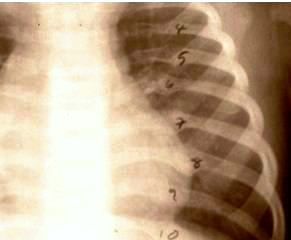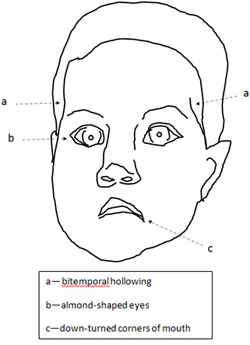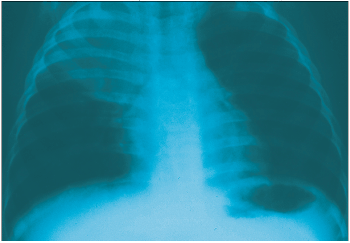Child Abuse and Ehlers-Danlos Syndrome
A 6-month-old girl was brought to the ED with fever, cough, and irritability; she appeared well-hydrated. She was born prematurely and had a long, complicated stay in NICU, where she received CPR on 2 occasions. There was concern about lung "congestion." The ED physician made a diagnosis of pneumonia. Rib fractures were also noted, but there was no history of fractures at the time of discharge from the NICU.
Test your skills in this 5-question quiz, starting here.
QUESTION 1:
A 6-month-old girl was brought to the ED with fever, cough, and irritability; she appeared well-hydrated. She was born prematurely and had a long, complicated stay in NICU, where she received CPR on 2 occasions. There was concern about lung "congestion." The ED physician made a diagnosis of pneumonia. Rib fractures were also noted, but there was no history of fractures at the time of discharge from the NICU.

For the discussion, click here.Click here for the next question.For the answers, click here.
QUESTION 2:
A 16-year-old girl visits her obstetrician for her first prenatal visit. Her genetic history questionnaire notes that her mother has chronic fatigue syndrome with arthritis, migraines, and irritable bowel syndrome. Her mother also has anxiety disorder and is viewed by the family as a hypochondriac. The obstetrician notes joint hypermobility and unusual skin elasticity on examination and tells her he would like her to see a cardiologist.

For the discussion, click here.Click here for the next question.For the answers, click here.
QUESTION 3:
A 9-month-old girl had low muscle tone, delayed motor milestones, and failure to gain weight. Her family and gestational histories were normal except that her mother was age 38 years at the time of pregnancy. At birth, she had significant hypotonia that necessitated tube feeding for a few days, but she was able to bottle-feed by the time of NICU discharge at age 7 days. On current examination, she appeared alert with good interaction and babbling. Facial appearance was slightly unusual, with almond-shaped eyes, down-turned corners of the mouth, and bitemporal hollowing. She also has somewhat unusual genitalia, with hypoplastic labia that make the clitoris easily visible. A diagnosis of Prader-Willi syndrome was made.

For the discussion, click here.Click here for the next question.For the answers, click here.
QUESTION 4:
A 6-month-old presents with episodes of recurrent head deviation to one side followed by irritability. These episodes may last for days. Both mother and aunt have migraine headaches. Examination and imaging are normal. An electroencephalogram during the event is normal.
For the discussion, click here.Click here for the next question.For the answers, click here.
QUESTION 5:
Pneumonia is one of the most common conditions seen by primary care physicians who treat children.

For the discussion, click here.For the answers, click here.
ANSWER KEY:
Question 1. Answer: a
Question 2. Answer: c
Question 3. Answer: c
Question 4. Answer: b
Question 5. Answer: a
Recognize & Refer: Hemangiomas in pediatrics
July 17th 2019Contemporary Pediatrics sits down exclusively with Sheila Fallon Friedlander, MD, a professor dermatology and pediatrics, to discuss the one key condition for which she believes community pediatricians should be especially aware-hemangiomas.